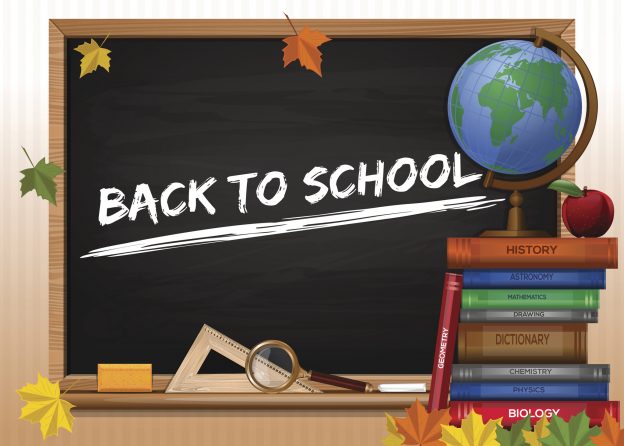
Published on: July 29, 2016
We all know that the beginning of a new school year gives some kids the jitters, but many parents admit that they get anxiety around this time of year too. Will my child be successful? Will my child make friends? Will they get a good teacher? And, as many parents I know would attest to, these first-day-of-school jitters can become even more intense when experiencing it with your child with autism. With this in mind, here are a few strategies and ideas to help you and your child prepare for the first day of school.
- Explain upcoming changes in ways your child can understand. How do you best communicate to your child? Sometimes more complex topics are best addressed through a story, a video, or with puppets. Perhaps writing the important details down on paper, marking dates on a calendar, or drawing pictures will help your child better comprehend what to expect. Whatever option you choose, use that familiar or preferred format to present the who, what, where, when, and why to your child.
- Help your child become familiar with new settings and people. If possible, have your child visit the new setting in advance and meet any teachers and peers that will be part of the classroom. When it is not possible to physically visit, collect pictures for your child to see. Include pictures of all important people, (e.g., teacher, principal, peers, etc.,) and locations, (e.g. classroom, bathroom, locker, etc.)
- Learn and practice new routines. A few weeks before the school year starts, begin practicing the morning routine with your child. Help him or her wake up at the right time, get dressed, and eat breakfast. Aim to have everything in place necessary to leave the house on time. Building these routines early will help your child understand what to expect during his or her mornings, and will help to build fluency with these tasks. It will also give you an opportunity to identify solutions to any obstacles that may come up in the process. Because mornings are often rushed and busy, practice preparing as much as possible the night before. This includes packing lunches, laying out an outfit, having any daily medicines dosed out and ready to go, and leaving the backpack packed and by the door. A word of caution – make sure you introduce these practice sessions in a manner that does not confuse your child. For some children, an explanation about on what day school will actually begin and why practice is important are sufficient explanations to ensure understanding of the situation. For children who may have a hard time differentiating between practice and the “real deal”, embed their school routines into their summer routines. That is, create a routine that you can rehearse without erroneously signaling to your child that it’s time to go to school. If your child associates his lunch box or her backpack with a school day, for example, pack the lunch into a different “picnic bag” or pack up their belongings in a “swim tote”. Those details can help signal to your child that although the morning routine is changing he or she can still expect summertime activities to occur following completion of the routine.
- Create consistency between previous settings, home, and school. Certain rules, routines, and materials can be used across environments to create a sense of consistency for your child. Communicate with all those who work with your kid to identify things that can be carried over to a variety of settings. Perhaps a token economy or visual schedule will help your child make connections from one environment to the next. It may also be helpful to use the same kind of language as your child’s teachers when giving certain instructions, or to utilize the same prompts or visual cues.
- Begin early! The more time you and your child have to prepare the better. Be careful not to underestimate the time it may take to learn new routines, to accept and adapt changes, and to acclimate to new people and a new setting.
- Associate the first day of school with reinforcement. Find a way to reinforce your child for participating in his or her first school day. One option would be to give access to a particular preferred item only during the school. Your child may feel more excited about school if he or she got special access to a favorite toy for periods of time during the day. You could also present your child with a celebratory reward after he or she completes the first day of school. Taking a moment to let your child know you are proud of him or her will help to build feelings of confidence and success.
- Parents – prepare yourselves! Preparing yourself for a new school year is also an important step in this process. Touch base with your child’s teacher and express your expectations and goals for the year. Become familiar with school policies and school contacts. Get to know other parents in the school and introduce yourself to the school community. Feeling comfortable in your child’s school and becoming familiar with the professionals who will work with your child may help to give you peace of mind and a better understanding of your child’s daily experiences.
When all is said and done, the first day of school can be as exciting as it is nerve-racking. Here, at The Shafer Center, I always enjoy watching new friendships develop, new discoveries being made, and new lessons being learned. I hope you are as excited as I am for the beginning of another great year.
For more information on The Shafer Center contact 410-517-1113